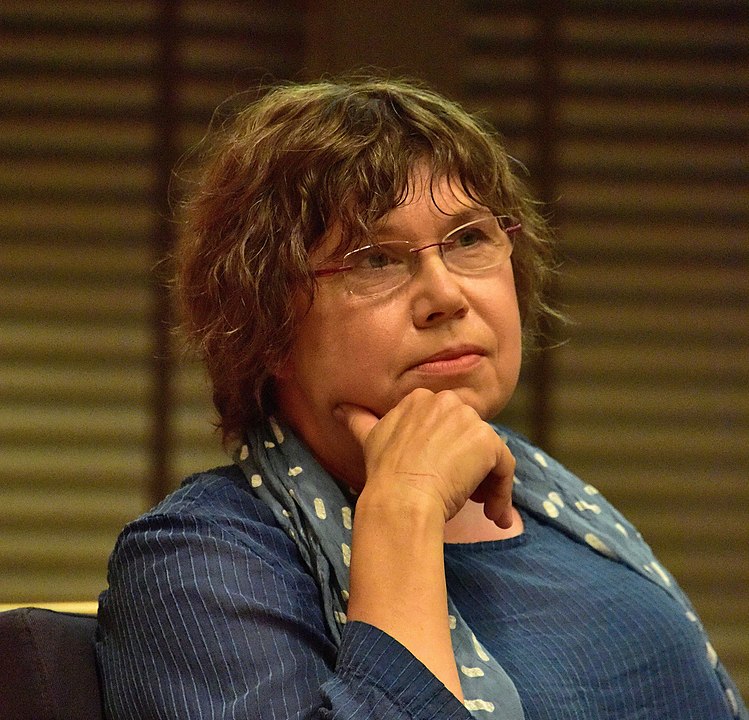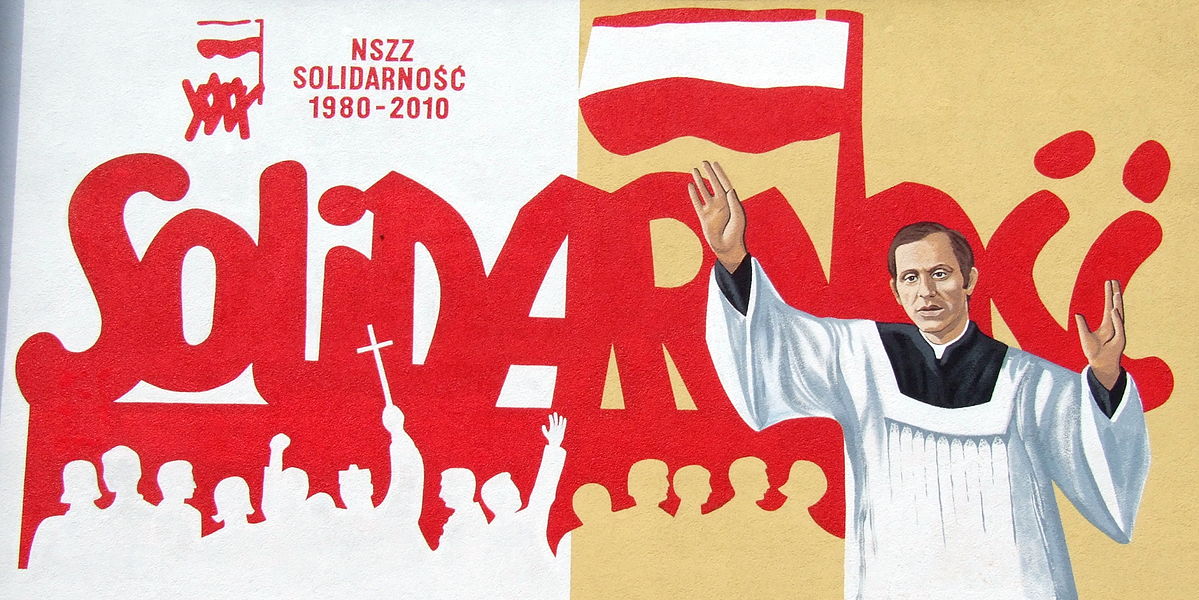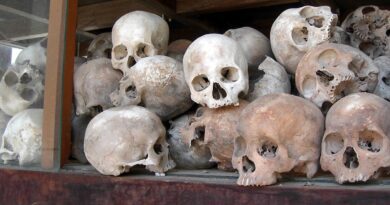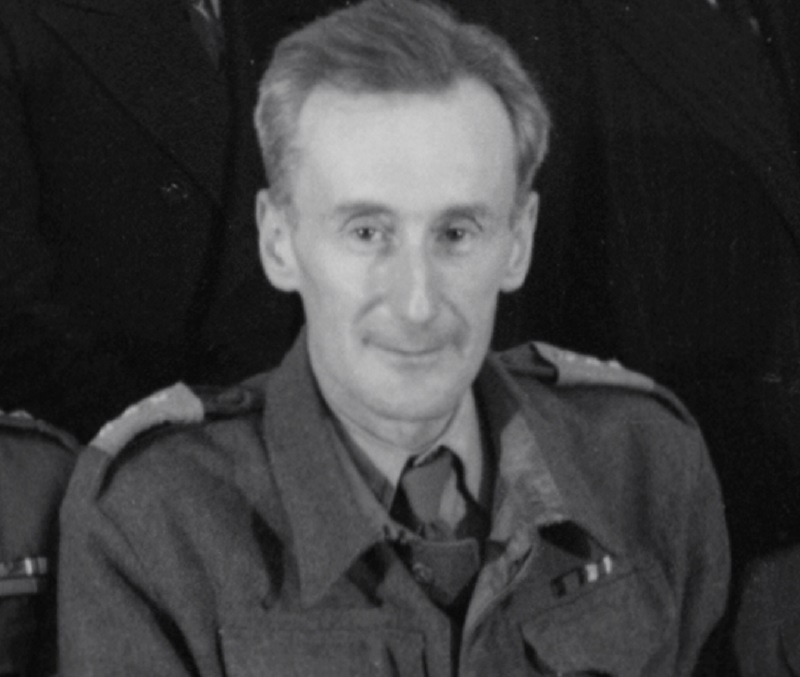Polonophobia – The Polish peasant depicted as a bum and murderer of Jews

As the founder and director of the Polish Center for Holocaust Research in Warsaw, Barbara Engelking, a Polish psychologist and sociologist of Jewish descent, is a recipient of prestigious awards for her works on the Holocaust in Poland. She recently received an honorary doctorate from Tel Aviv University, and world public opinion doesn’t know that her publications are a hoax, says Polish historian Piotr Gontarczyk. While some of Engelking’s manipulations were brought to light in Poland in 2021 by a lawsuit brought by an elderly Polish woman whose late uncle is smeared in her book, co-authored with Jan Grabowski, Night without End: The Fate of Jews in Selected Counties of Occupied Poland, Gontarczyk describes the techniques used by Engelking to give what in his view is a very biased and prejudiced account of events.
Piotr Gontarczyk
(The author is a Polish historian working for Poland’s Institute of National Remembrance.)
Barbara Engelking is a recipient of prestigious awards and recently received an honorary doctorate from Tel Aviv University. World public opinion doesn’t know that her publications are a hoax. Proof of this is the manipulation of the wording of quotes and the presentation of false accusations and rumors as evidence of the alleged crimes of Poles. One of the principal bad guys in Barbara Engelking’s publications is the Polish peasant, whom Jewish refugees encountered during the Holocaust for obvious reasons of proximity.
In her book Such a Beautiful Sunny Day... the author writes: “In the eyes of the Jews, the peasants were, as I have already written, primarily greedy, in addition to being primitive and violent. Class differences that influenced the perception and description of the peasants were not insignificant. Ada Schwerdt portrayed one of them: ‘Among other things, he was also a completely primitive man. He was as primitive as an animal […]. Chlubek beat and abused his wife and two daughters. He was a veritable animal. From early in the morning, the whole house shook from screaming. Wooden planks and furniture were smashed, and people argued and were beaten. In addition, no one in the house washed themselves for months. Everyone and everything here was dirty’” (p. 136).
The author established a central theme of her work around the words about Chlubek’s primitivism.
REMOVING THE CONTEXT
The trouble is that Engelking removed a sentence from Ada Schwerdt’s statement that changes its meaning entirely: “The family as a whole was among the true outcasts of society.” Thus, Schwerdt was not portraying a typical farmer, but a representative of a pathology. However, Engelking removed the revealing sentence from the witness’s statement with a few scissor snips and portrayed the typical Polish peasant as a dirty, primitive animal.
Furthermore, in an article published in the book Outline of the Landscape. The Polish Village and the Jews 1942–1945 (Polish original title: Zarys krajobrazu. Wieś polska wobec Żydów 1942-1945) Engelking made use of another Jewish testimony, building a general description of peasants’ attitudes toward the Holocaust: “One of the Jews hiding in the countryside near Łapanów, writing about the attitudes of Polish peasants toward the Holocaust, noted: ‘in their dimwittedness and ignorance, poisoned by the venom of Nazi hatred, they conceded that the oppressors were right’” (p. 267).
Zellner had recorded something different, however. So let’s go back to his earlier words, which were edited out here from his account: “In general, pity for the poor persecuted Jews shone through in their conversation. There were those among them who even deeply experienced the tragedy of the Jews, but there were, unfortunately, also those who in their dimwittedness… [etc.].”
The Jewish witness also spoke about the peasants’ kindness and generally varied attitudes. But Engelking omitted half of his words and quoted only the negative part, transferring its assessment onto the entire village community.
Similarly, from the Jewish testimonies, Engelking extensively cuts out those passages that testify to the kindness and help given to the Jews by the peasants and the names of those who rescued them. For example, in the book mentioned above, she included such a quote from the testimony of Margot Dranger: “By chance it came to light that a peasant, whose name I do not remember, murdered two Jewish women, hidden away at this home. Robbery was the peasant’s motivation for murder. He killed the two women to get at the rings that the women possessed. Chilek Wodzisławski, together with Schreiber, decided to avenge the deaths of these women. So they went to this peasant to settle accounts with him. The peasant understood the purpose of their visit when he noticed them approaching in his direction. Out of the blue, he grabbed an axe, ran up to Chilek, and, with a few strong blows, laid him dead on the spot. Schreiber ran away and died later […], we buried him in the forest” (p. 223).
What were the words to be found in those ellipses? The original part of the quote reads as follows: “Out of the blue, he grabbed an axe, ran up to Chilek, and, with a few strong blows, laid him dead on the spot. Schreiber ran away and died later, but I don’t remember further under what circumstances. Chilek Wodzisławski, who was also so well-liked by the Polish peasants, died at their hands. We buried him in the forest near Hanka Bereta’s house.” Why would the new story version need words about the peasants’ sympathetic kindness to Chilek Wodzisławski? What use is the mention of Hanka Bereta, who had come to their rescue? Scissors, snip, snip and the matter is settled.
A Polish volunteer in Auschwitz: the only such case in history (interview)
POLISH PEASANTS ARE MURDERING JEWS
In writing about the denunciations and murders of Jews, Barbara Engelking makes extensive use of post-war court and investigative files, the so-called “August books” (called in Polish sierpniówki). They contain a mixture of true and false testimonies, and often information from anonymous denunciations. Indictments drawn up on their basis fell apart in court. How did the numerous instances of false information in these files come about?
After World War II, accusing someone of turning in or murdering Jews was one way of settling long-standing scores, neighborhood disputes and even family, personal and property-related conflicts. Why was it necessary to accuse someone of a theft, of plowing a skiff of land, or to seek another avenue of revenge for someone who had informed the authorities of a robbery that resulted in a cousin going to jail?
A denunciation or the testimony of one’s own or a (substituted) witness were useful tools for getting someone put on trial. Due to the high penalties imposed for wartime crimes against the Jews (up to and including the death penalty), the rule was first to arrest the suspect and then clear up the case during an investigation. Whether the suspect defends himself against the charges or not – that’s his problem. At least for a few months, he will be tucked away in jail.
Files of such cases usually contained true information and led to the punishment of the perpetrators. However, plenty of anonymous denunciations, malicious lies, accusations, and data from circulating stories or rumors exist. This is the kind of information that Barbara Engelking extracts on a large scale from the cases mentioned, presenting everything she finds as fact.
In Such a Beautiful Sunny Day… we read, for example: “Franciszka and Jakub Żak in the village of Hucisko (Przeworsk district) hid Meiloch Rois in their farmhouse until he ran out of money and clothing. Then they decided to kill him. Franciszka Żak chopped off his arm with an axe, and her husband strangled and kicked him. Then they tied the battered man to a cart and drove him to the Gestapo station in Kańczuga” (p. 228).
Records show that in March 1951, the Rzeszów prosecutor’s office received an anonymous denunciation, parts overlapping with the account in Engelking’s book. During the investigation, however, it was established that the story was made up: Mejloch Rojs was indeed hiding in the village, but not at Żak’s house, and on the fateful day near his farm, Mejloch encountered a local collaborator, Stanisław Piątek, who, in pursuit of the Jew, ran into the Żaks’ buildings. The latter had nothing to do with the case; Meiloch was not abused, they did not beat him afterwards, Mrs. Żak did not “strike him with an axe,” and neither of them drove the fugitive to the police station. The prosecutor’s office dropped the case, ruling that it was a false denunciation by people with whom Żak was in litigation.
Why did Barbara Engelking use an anonymous denunciation in this case, ignoring the investigation’s results? After analyzing many similar cases, it is clear that, as usual, the only thing that mattered was what the Poles could be “stuck” with, and every “axe blow,” or killing with a stake or stabbing of a Jew with a pitchfork by a Pole (even if it never occurred) was worth its weight in gold.
In the same book, Engelking took the most drastic descriptions of drownings, stabbings and murders of Jews using other tools from the post-war court case of the Hryć brothers from Bielsk Podlaski district (pp. 211–212, 230–233). I’ve read these files. They show that the accusations against the brothers were a hoax and that the scenes of tormenting and murdering of Jews, described extensively by Barbara Engelking, did not occur. I described the case first in the Sieci weekly and then in the prestigious scholarly journal Dzieje Najnowsze (4/2018). Several years have passed, and the author has not responded. A separate book could be written about other similar cases stemming from Barbara Engelking’s publications.
HOW DID POLES GLEEFULLY CAPTURE JEWS?
It is worth noting that the author’s creativity, as mentioned earlier, in constructing a “new history” of the Polish peasants goes far beyond what I have already described. In the book Such a Beautiful Sunny Day… we read, for example: “Coming from Bełżec, the Smule [Szmule] family of six was hiding in the forest in the Borkowizna colony (Niedrzwica commune, Lublin district). They were caught and taken to the gendarmerie station by Władysław Boguta, who, ‘after shooting the still living family members, beat them and stripped them of their clothing. These Jews had previously given him a lot of goods and gold to redeem themselves’” (p. 176).
In the course of the investigation, it turned out that there was no evidence against Boguta (a typical case of a rural settling of accounts with an occupation village leader), and he was acquitted. However, Barbara Engelking posted a quote from the file about his alleged criminal activities and referred to the testimony of “a witness, Antoni Lisik.”
Antoni Plesik, not Lisik, testified in the case, and there are no such words in his testimony. So, where did the quote come from? The quoted words resemble an anonymous denunciation from the case file, but this is less drastic in content than what was quoted. There is a suspicion that the author relied on this document but twisted its content, writing down this quote and putting it in the mouth of the witness “Lisik.” If anyone doubts that a professor from the Polish Academy of Sciences could have committed such a thing, it is worth citing two other examples of equally dubious cases.
In the article above from the book Outline of the Landscape. The Polish Village and the Jews 1942–1945, the Engelking quoted Aniela Bielska’s testimony, which reads: “I don’t remember the date; it was in 1943. Being at home, I noticed how people from the whole village were rushing about and asking what was happening, to which they replied that they were going to Jan Sarnacki’s farm and that there was a ’Jew’ lying killed in Sarnacki’s farmyard…” No one is calling out here, no one is shouting, and the phrase “were rushing” at the time meant as much as “they were going” to some place where Bielska also went.
Engelking took the document and used it to build the following narrative: “‘There is a Jew killed!’ cried out the neighbors to Aniela Bielska when she noticed in February or March 1943 while at home in the village of Brok (Wysokie Mazowieckie district) that ’people from all over the village were rushing about.’ She asked these people where they were rushing to. ‘There is a Jew killed at Sarnacki’s!’ they called out, so Bielska rushed with everyone to see what had happened in her neighbor’s plot” (p. 287).
The content of the quotations was changed here, exclamation marks absent in the sources were pasted on, and a set of verbal manipulations was used to build an atmosphere of mad chases and shouting, where the cry echoes: “There is a Jew killed!” This, again, is a hoax. In the same way, a “dynamic” scene (“there is a Jew!”) of peasants’ efforts to catch and hand over a Jewish fugitive to the Germans found in the village of Stara Łomża was fabricated elsewhere in the text (p. 275).
There were some real tragedies, such as the capture and handing over of Jews to the Germans by peasants who were terrified by the vision of their village being burned to the ground for harboring a group of 10 or 11 Jewish refugees in the village of Oleksin (Bielsk Podlaski district). Here, Engelking discusses this tragedy several times in different words and with the help of successive testimonies of Jewish witnesses, so that she manages to “arrive” at the number of about 50 victims.
Using the techniques described here (these are only some of them), the author wrote the book Such a Beautiful Sunny Day… in which, after several hundred pages of narrative, she summarized her achievements: “While working on this book, I reached out to many sources. I analyzed 300 court cases, in which there were 281 cases of denunciation (701 Jews were the victims of these denunciations) and 139 murders, in which 473 Jews were killed” (p. 258). These descriptions, studies, and calculations by the author are all a hoax.
One could describe a hundred more instances where Barbara Engelking altered the content and meaning of the quoted sources, compiled them from various documents or, through a series of other methods not permitted in such academic work, constructed some kind of story about Polish peasants.
Meanwhile, the intellectual curio that is the book Such a Beautiful Sunny Day… has been translated into English and published by the Yad Vashem Institute in Jerusalem. This indicates that factual control over the quality of publications at that institution, established after all to guard the truth and memory of the Holocaust, does not exist. Barbara Engelking recently received an honorary doctorate from Tel Aviv University for her historical and mathematical achievements; it’s like a cabaret.
The nightmare of Nazi victory two decades on: German plans for Europe
QUALITY CONTROL FROM THE INSTITUTE OF NATIONAL REMEMBRANCE (IPN)
Barbara Engelking and others of the Polish Academy of Sciences have recently written articles and letters published in Gazeta Wyborcza about the IPN as an unnecessary institution perpetrating lies about history. Before doing so (Engelking herself or Dariusz Libionka, whose similar methods of operation I described in the last Glaukopis), they should answer the accusations against them publicly.
(…)
As long as there is an IPN conducting research and preparing various publications on the Polish villages, the wave of falsification of elementary facts and phenomena concerning the German occupation of Poland, including the attitudes of Polish peasants towards the Holocaust, will be met with a factual response in the form of research results, exhibitions, educational articles and other kinds of public statements (including in the international sphere).
Jan Grabowski, Barbara Engelking, Dariusz Libionka, et al. probably cannot have any hope that the Polish parliament will do any serious harm to such an important institution of the Polish state as the IPN. It is true that in the Sejm there are the after-comers of communist oppressors Urban, Kiszczak, and Jaruzelski from the left, but on the other side, in addition to Law and Justice (PiS), there is at least the PSL agrarian party.
If there were no Institute of National Remembrance, Poland would be left with only the Polish Academy of Sciences’ Center for Holocaust Research. Lest it be said later that I did not warn: allowing the unfettered imposition of a “new version of Polish history” by this scientific cancer will mean that in a few years Polish peasants will gain a public status similar to that of Treblinka guards.
This article was first published in Polish in the Do Rzeczy weekly in February 2024.
English versions of quotes from Barbara Engelking’s books presented in this article are translations of the Polish editions of these books. Page numbers given here are also from the Polish editions.



